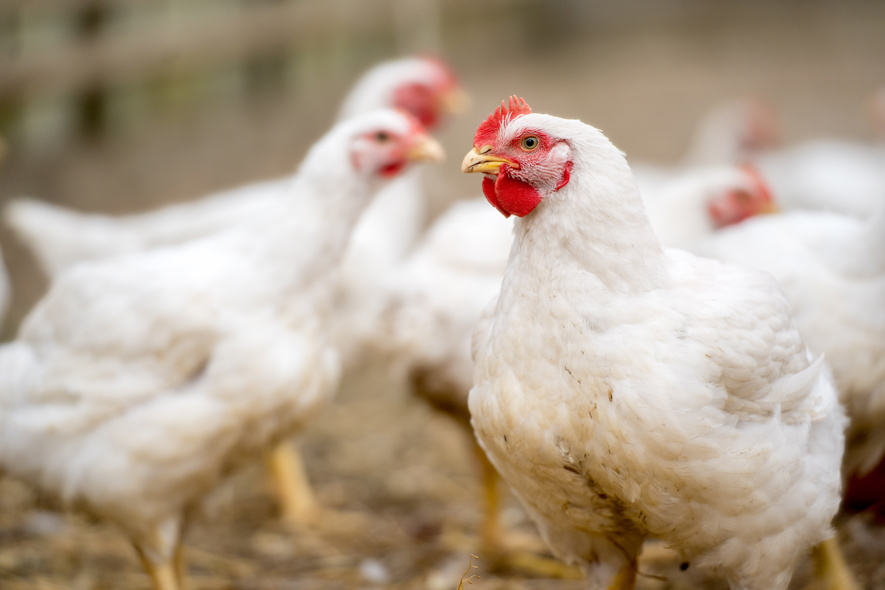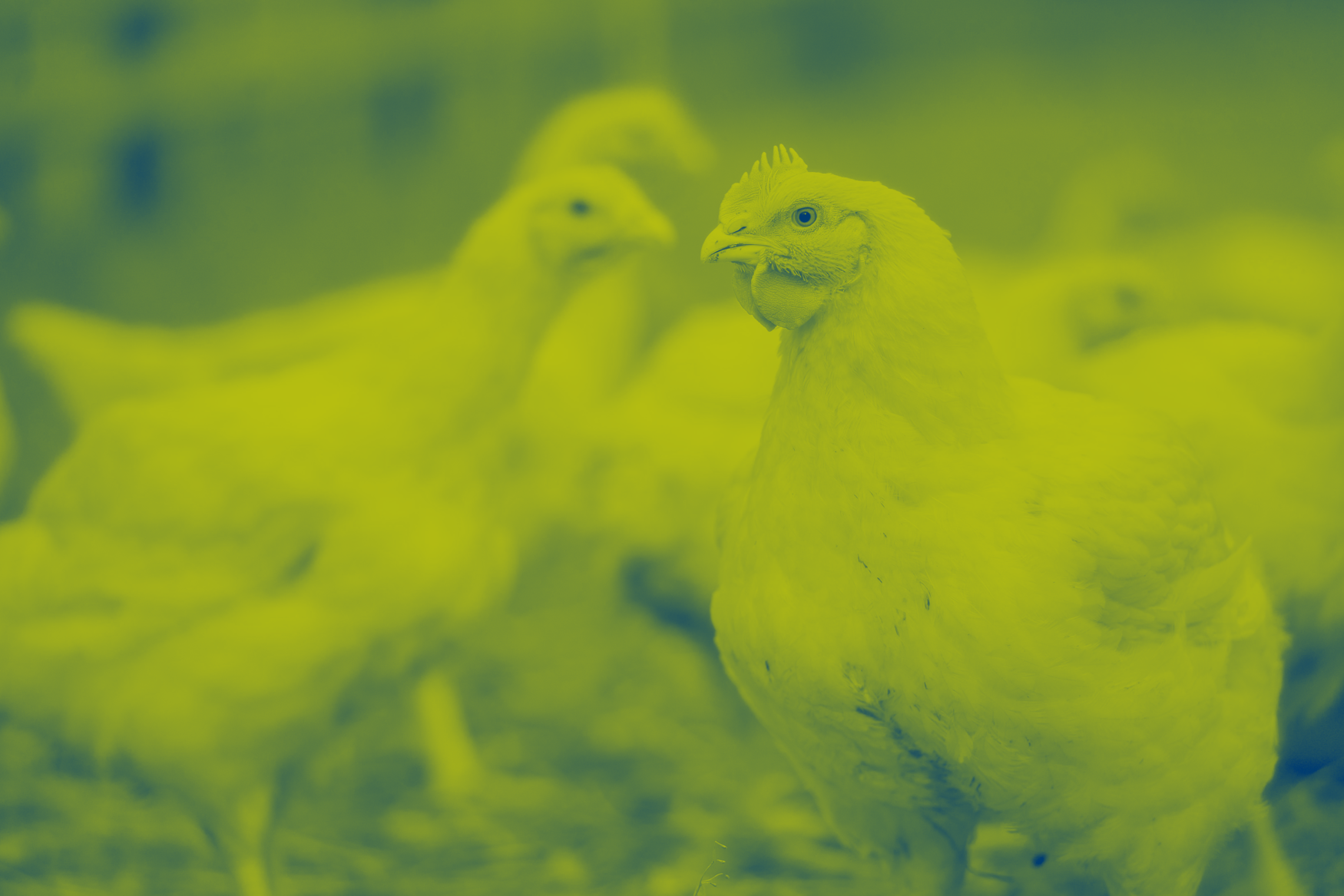Chickens don’t sweat: managing heat within your broiler flock
Each year, we can expect at least one heat wave during the summer. Heat waves can have significant negative effects on livestock performance and economic returns. The Canadian broiler industry alone loses millions of dollars in productivity each year due to reduced growth rates or increased mortality rates. It is important to be aware of the effects of heat stress and to stay ahead of any risk toward your flock.

What causes heat stress?
While chickens have a higher body temperature (40.5-41.5 °C) than humans (37 °C), they lack sweat glands, which limits their ability to reduce their core body temperature. Broiler chickens have a fast metabolic rate due to genetic selection for high yield and fast growth, which means they produce more heat than similarly sized laying hens. Typically, temperatures above 22 °C (for a 4-week-old broiler) will result in a heat stress response. As the bird grows, their internal heat production increases due to increased feed intake, which hinders heat tolerance.
Internal and external effects of heat stress on your flock
During warmer days it is important to keep an eye on your flock to ensure they are not experiencing heat stress. While experiencing heat stress, you will notice your broilers will change their behaviour to try to dissipate body heat. They will spend less time active and may lie down with their wings outstretched. Water intake increases and feed intake decreases. Broilers may start panting to decrease their body temperature, although this could lead to dehydration.
In addition to external symptoms, heat stress can cause multiple internal changes. Broilers may experience physiological effects of heat stress, including decreased levels of antioxidants in the body, low levels of carbon dioxide in the blood and increased levels of stress hormones (including corticosterone and adrenalin). These physiological changes affect the gut and immune systems, leaving the birds susceptible to diseases. Productivity may also decrease, with flocks experiencing decreased feed intake resulting in a decrease in body weight, poor feed efficiency and ultimately higher levels of mortality.
It is important to focus on prevention before any of these symptoms take effect, as they are nearly impossible to revert once present.
3 key steps to prevent heat stress
While we cannot control the weather, we can mitigate some of the effects of heat waves on our flocks. These preventative steps include:
- Using mechanical techniques to cool poultry houses to increase the ventilation rate or using sprinklers or water misters. Increased air movement can help with heat removal through convective heat loss or heat transfer mechanisms.
- Management practices can be used, such as early heat conditioning (exposure to hot temperatures during early rearing) which helps broilers habituate to hot spells. Lights can also be dimmed during the hottest parts of the day to encourage flock inactivity.
- Nutritional strategies to counteract the effects of high heat, including using feed additives or restricted feeding practices. Requirements for certain vitamins, including A, C and E, increase in high temperatures.
It is important to stay ahead of heat waves and ensure your flock has the means to manage the heat as once an animal develops heat stress it is difficult to recover from. Having the right tools and systems in place can help prevent or mitigate heat stress related damage before it takes effect.
*Referrals available upon request.*

Interested in taking a more in-depth look into our Canadian research?
Download our latest article of new innovations with research commercial results.
